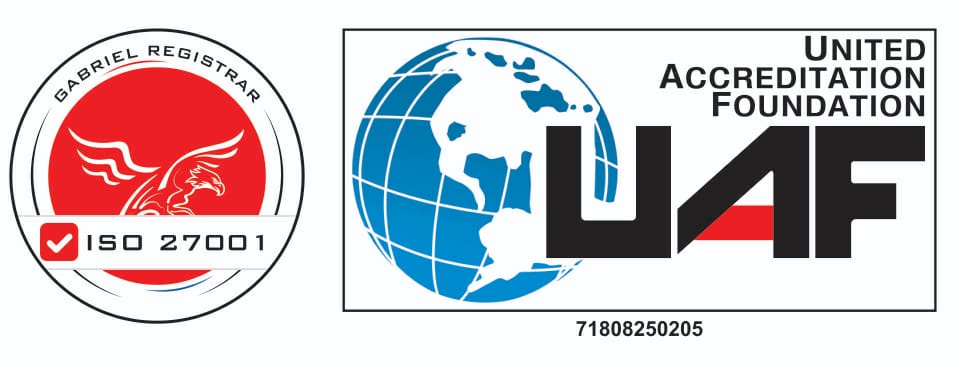Vulnerability Assessment and Penetration Testing (VAPT) aids businesses in identifying and resolving common weaknesses in their IT systems.
VAPT is a thorough, two-step procedure. While vulnerability assessment discovers potential weaknesses in the system, penetration testing simulates an assault on such flaws to determine the system’s security robustness.
An IT system may be plagued by a variety of common vulnerabilities, which could jeopardize the security and data integrity of the system. Software bugs, outdated systems, configuration problems, and more sophisticated flaws like SQL injection or Cross-Site Scripting (XSS) are all examples of vulnerabilities.
These flaws can be used to gain access without authorization, compromise data, or even bring about system breakdowns.
So how VAPT can help in solving common vulnerabilities in IT systems and applications? VAPT offers a proactive approach to finding these vulnerabilities by continuously assessing and testing the IT systems and applications before a malicious attacker can.
Organizations can determine the seriousness of each vulnerability through simulated attacks, decide on risk management strategies, and develop effective responses.
To protect their IT systems and applications from constantly changing cyber threats, businesses can use VAPT, which offers a robust defensive mechanism. This ensures increased security, compliance, and, most importantly, peace of mind.
Table of Contents
Understanding VAPT

To defend IT systems and applications from potential attacks, vulnerability assessments and penetration tests (VAPT) are two types of cybersecurity evaluations that work together.
VAPT aims to detect system vulnerabilities, whether from software, hardware, or procedural flaws and then test the efficacy of the safeguards to protect against them.
The practice of thoroughly examining an IT infrastructure to find potential dangers is known as vulnerability assessment. Potential vulnerabilities are categorized, and their relevance is reviewed.
Penetration testing, on the other hand, simulates a cyberattack on the system to evaluate its security. It tests if the vulnerabilities discovered during the assessment phase may be used to get around security measures or to start other harmful operations.
Finally, we ask how VAPT can help solve common IT system vulnerabilities. To keep an IT environment secure, VAPT is essential. The approach enables an organization to comprehend its systems from an attacker’s perspective and identify system flaws.
It provides information on the efficacy of current security measures, allowing the IT team to develop an effective plan to strengthen system defenses and add a security layer.
This method enables organizations to prioritize and remediate vulnerabilities while lowering the risk of data breaches and system incursions.
How does VAPT Work?

The main components of the Vulnerability Assessment and Penetration Testing (VAPT) process are several stages intended to locate and minimize potential security threats in an IT system.
Initial steps in the vulnerability assessment process entail using automated scanning technologies to find potential flaws in the system. This could involve widespread problems, including out-of-date software versions, unsafe setups, or insufficient security measures. The basis for allocating remedial efforts is the severity ranking of each vulnerability.
Penetration testing then provides a more thorough investigation. This step simulates the actions of a possible attacker by using a variety of ways to exploit vulnerabilities that have been found.
The goal is to understand the actual threats these vulnerabilities represent to the IT system. Ethical hackers may use tools like Wireshark, Nessus, or Metasploit, depending on purpose testing goals.
So how can VAPT help in solving common vulnerabilities in IT systems and applications? Organizations can proactively detect vulnerabilities, comprehend their potential impact, and implement efficient countermeasures across the complete VAPT process.
Organizations can take proactive steps to strengthen their IT systems and applications by strategically identifying weak points before a malicious attacker can exploit them and by actively testing these vulnerabilities.
This reinforces their defense against cyberattacks and helps them comply with regulations and maintain data integrity, boosting their credibility online.
Common Vulnerabilities in IT Systems

The IT industry is plagued with flaws that could expose systems to possible cybersecurity risks. Let’s look at some of the most prevalent vulnerabilities and how VAPT can help solve common vulnerabilities in IT systems.
- Poor Software Design: Software is frequently created with security as an afterthought, leaving it with inherent flaws. In such circumstances, attackers may take advantage of shoddy user interface design, insufficient security measures, or weak system architectures. Early vulnerability detection by VAPT enables teams to fix these issues during the development or update phases.
- Out-of-date software: Systems running out-of-date software might expose various security flaws. Regular VAPT can assist in identifying the necessity of installing critical software patches and updates, lowering the risk.
- Misconfigured Systems: Systems and servers that have been misconfigured may be vulnerable to intrusion or data leaks. Organizations can use VAPT to set up that system following best practices, minimizing attack points.
- Weak Authentication and Authorization Controls: Weak or insufficient authentication controls may allow unauthorized users to access sensitive data. Organizations can find and strengthen these weaknesses with VAPT, improving the security of user data.
- SQL Injection: One of the most widespread flaws, SQL Injection, allows attackers to change databases, potentially resulting in data loss or leakage. The effective identification of SQL injection vulnerabilities by VAPT techniques makes it easier to create the requisite defenses.
- Cross-Site Scripting (XSS): Through XSS, hackers can insert harmful scripts into websites that other users browse. Potential XSS vulnerabilities may be found with the help of VAPT, allowing the organization to fix them quickly.
- Cross-Site Request Forgery (CSRF): CSRF vulnerabilities risk data integrity and privacy by tricking victims into taking actions they didn’t plan to. VAPT can help locate these vulnerabilities and create mitigation plans that work.
- Unencrypted Data: Unsecurely encrypted data may be intercepted during transmission, potentially resulting in data breaches. VAPT can highlight any flaws in encryption techniques, indicating the need for more robust encryption tools or procedures.
Role of VAPT in Identifying Vulnerabilities
An IT system’s weaknesses can be found via vulnerability assessment and penetration testing (VAPT). Utilizing automated technologies, the initial vulnerability assessment step scans systems, networks, and applications to identify software defects, out-of-date patches, or incorrect configurations. Each threat is then ranked according to how it might affect the system.
The penetration testing phase uses these discoveries by utilizing ethical hacking methods to take advantage of these weaknesses.
To provide a realistic assessment of the potential harm or data loss an organization may experience if a vicious attacker exploits its vulnerabilities, this practical assessment examines the genuine extent of risk each exposure poses.
Now let’s talk about the critical issue: how VAPT can help solve common IT system vulnerabilities. Examples from the real world show how effective VAPT is.
For instance, an e-commerce business might use VAPT to find and fix web application vulnerabilities like SQL injection or Cross-Site Scripting (XSS). By doing this, they can guard against data breaches and ensure the privacy of sensitive client data.
Role of VAPT in Solving or Preventing Vulnerabilities
To adequately address and avoid common vulnerabilities in IT systems, vulnerability assessment and penetration testing (VAPT) is essential. Organizations can take corrective action to resolve these flaws in their IT systems after VAPT has identified vulnerabilities and potential security holes.
Findings from VAPT allow for quick correction of identified vulnerabilities. For instance, IT teams can implement appropriate security measures if vulnerable configurations are found, enhancing system security. Developers can update the code for applications with problematic code that makes them vulnerable to SQL injections or Cross-Site Scripting (XSS) assaults.
Similarly, if the evaluation reveals that the system is running out-of-date software, a typical vulnerability, the solution can involve timely software updates and system patches. Additional security measures can be taken by establishing two-factor authentication, installing antivirus software, and enforcing substantial password restrictions.
In addition to providing organizations with the knowledge to address significant IT system vulnerabilities, VAPT can also assist in preventing their recurrence. Regular VAPT procedures can create secure coding guidelines or configuration management procedures that lessen the likelihood that these flaws will reappear.
Additionally, VAPT offers a foundation for creating thorough security policies and procedures. Employees can be educated about secure practices through awareness and training programs based on VAPT findings, effectively making them an active line of defense.
Conclusion
A potent cybersecurity procedure called vulnerability assessment and penetration testing (VAPT) helps businesses recognize, comprehend, and mitigate possible dangers to their IT systems and applications. VAPT gives companies a head start in anticipating and preparing for potential security breaches by thoroughly assessing system vulnerabilities.
VAPT is crucial in answering the query of how VAPT can help in solving common vulnerabilities in IT systems and applications. It goes beyond only identifying the weaknesses. Through systematic investigation and exploitation of potential security concerns, VAPT gives organizations the knowledge they need to address the vulnerabilities adequately.
This depth of expertise enables IT teams to solve these vulnerabilities strategically, thereby lowering the risk of exploitation and prospective attacks.
Additionally, the significance of routine VAPT cannot be emphasized. Cybersecurity threats are constantly evolving and are not static.
Organizations are guaranteed to remain ahead of these emerging dangers via systematic VAPT training. It motivates them to upgrade and improve their security procedures frequently, ensuring their IT systems are reliable and safe.
FAQs: How VAPT Can Help in Solving Common Vulnerabilities in IT Systems
1. What is VAPT?
Ans. Vulnerability assessment and Penetration Testing, or VAPT, is a thorough evaluation procedure to find and address weaknesses and vulnerabilities in an organization’s IT infrastructure. It entails methodical investigation and testing to see the risks and vulnerabilities that hackers might exploit.
2. How does VAPT deal with typical IT system and application vulnerabilities?
Ans. By simulating actual attack scenarios to find potential flaws in the system, VAPT addresses typical vulnerabilities. It offers a detailed examination of the system’s security, identifies existing weaknesses, and, by recommending specific countermeasures, aids in rectification and prevention.
3. Can VAPT ensure all my IT systems are completely secure?
Ans. VAPT can considerably improve your security posture even though no technique can ensure 100% security. It identifies potential security holes and offers advice on how to fix them, so guarding against possible breaches.
4. How frequently should I set up a VAPT assessment?
Ans. Your company’s nature and risk profile determine how frequently VAPT evaluations are conducted. However, it is advised to have a VAPT evaluation at least once a year or after making any significant adjustments to your IT architecture or systems.
5. What kinds of vulnerabilities is VAPT capable of detecting?
Ans. VAPT can detect a wide range of vulnerabilities, such as network or application vulnerabilities, misconfigurations, obsolete software, weak user passwords, and poor data encryption.
6. Can VAPT be utilized to satisfy compliance obligations?
Ans. Yes, VAPT is frequently used to satisfy several legal and compliance needs (like GDPR, PCI-DSS) that demand organizations maintain a strong security stance to safeguard sensitive data.
7. What distinguishes penetration testing from vulnerability assessment?
Ans. While penetration testing, often known as ethical hacking, aims to exploit these flaws to ascertain the actual risk they pose, vulnerability assessment is a procedure to detect and quantify weaknesses in a system.
8. Will the VAPT process impact my regular business operations?
Ans. VAPT service providers often work to limit interference with your routine business operations. The procedure is typically planned for a time that will have the most negligible impact on your company’s activities, either after hours or on the weekend.
9. Who should handle my IT systems’ VAPT?
Ans. VAPT should be carried out by qualified and experienced cybersecurity specialists or a reputable cybersecurity company specializing in vulnerability assessment and penetration testing. They have the necessary skills and knowledge to conduct the test correctly and securely.
10. What should I do following the VAPT assessment?
Ans. Following the VAPT review, you should address the vulnerabilities found following the guidance offered in the VAPT report. The method must also be documented for auditing purposes. It is essential to do regular follow-ups and further testing to determine whether the vulnerabilities have been properly fixed.












